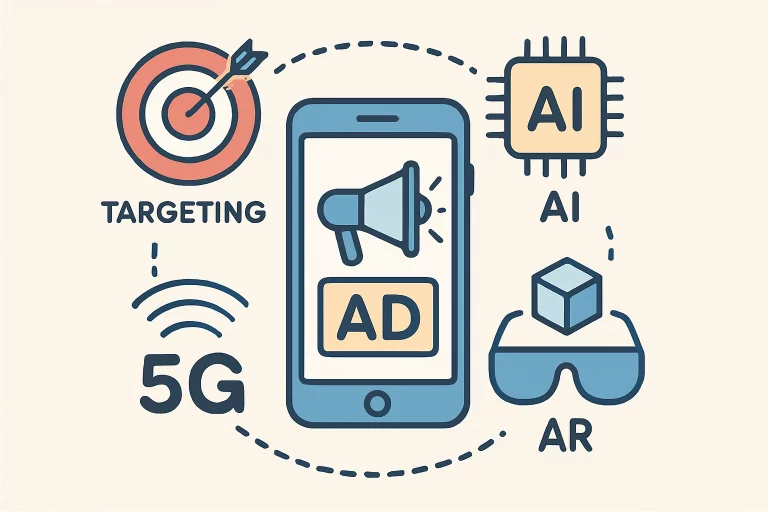Table of Contents
- Enhanced Targeting Capabilities
- Real-Time Campaign Optimization
- Personalized Ad Experiences
- Integration of Emerging Technologies
- Cross-Device Consumer Engagement
- Data-Driven Insights and Analytics
Mobile devices have transformed how consumers interact with content, making real-time, personalized engagement more achievable. With the rise of automated ad buying, brands can deliver highly targeted messages to specific audiences at optimal times and locations. This shift in digital strategy allows marketers to analyze behaviors and adjust campaigns on the fly, increasing relevance and efficiency. As user attention becomes more fragmented, responsive advertising tactics continue to grow in importance.
One of the most visible examples of this shift is seen through mobile ads, which are now customized based on user location, browsing habits, and app usage. These dynamic formats allow for more personalized and timely messaging, leading to deeper consumer interaction. When used thoughtfully, this method helps bridge the gap between brand messaging and individual needs, making it easier to capture attention in an increasingly mobile-first world.
Enhanced Targeting Capabilities
At the heart of mobile programmatic advertising lies its groundbreaking ability to hyper-target audience segments. Rather than relying on traditional, generalized demographic categories, advertisers can segment potential customers according to granular factors such as in-app behaviors, purchase patterns, web browsing activities, and precise geolocation data. With the help of advanced algorithms and machine learning, vast oceans of historical and real-time information are consolidated, empowering marketers to zero in on the highest-value audiences. This enables the creation of dynamic audience profiles, which are refined continuously as new data is collected. Campaign messages and offers are more tailored than ever, significantly boosting user engagement and conversion rates. Improved targeting enables marketers to minimize waste by allocating advertising budgets exclusively to the most viable prospects. This enhances the overall return on investment (ROI) and fosters stronger relationships between brands and consumers.

Real-Time Campaign Optimization
Beyond just facilitating targeted ad delivery, programmatic technology is a powerful engine for continuous campaign optimization. Real-time analytics dashboards grant advertisers access to up-to-the-second data, covering metrics like impressions, click-through rates, conversions, and even in-app engagement events. This high visibility means marketers can instantly pivot tactics based on what’s working—or not working—in the moment. Whether adjusting bidding strategies during high-traffic periods, refreshing creative assets to boost stagnating performance, or redefining audience parameters based on emerging trends, the ability to make data-driven changes on the fly results in much more efficient campaigns. The agility provided by real-time optimization leads to more intelligent resource allocation, higher consumer engagement, and improved campaign longevity. Ultimately, brands using this approach maintain a consistent advantage by staying relevant, fresh, and responsive to audience needs.
Personalized Ad Experiences
Today’s digital audience seeks more than broad-stroke advertising; they demand relevant, valuable interactions with the brands they choose to engage with. Mobile programmatic solutions take personalization to new heights by enabling the customization of messaging, visuals, timing, and calls-to-action for finely tuned segments. Through dynamic creative optimization (DCO), each ad impression is tailored using real-time information about user behaviors, interests, and past purchases. This level of personalization captures attention and builds trust and brand loyalty over time. Users are more likely to interact with and act upon ads designed for them, leading to better engagement metrics. Personalization at this scale transforms ads from being perceived as interruptions to becoming welcome, seamless parts of a user’s mobile experience, raising overall satisfaction and likelihood of repeat interactions with the brand.
Integration of Emerging Technologies
The evolution of mobile programmatic media is being fast-tracked by cutting-edge technologies such as 5G wireless, augmented reality (AR), and artificial intelligence (AI). The rollout of super-fast 5G networks eliminates latency, enabling advertisers to develop immersive, data-intensive ad formats like high-definition live video and real-time AR overlays. For example, users might virtually “try on” products in augmented spaces or participate in interactive games that blend physical and digital worlds, directly from their mobile devices. Artificial intelligence takes center stage by enhancing targeting algorithms, automating bid optimizations, and identifying audience shifts more accurately. Meanwhile, AR blurs the traditional line between advertisement and user experience, inviting audiences to engage with branded elements as part of their environment. As these technologies mature and mainstream, users can expect more captivating, minimally intrusive, and genuinely helpful advertising experiences that provide tangible value and deeper engagement.
Cross-Device Consumer Engagement
Modern consumers are no longer tethered to a single device; they shift seamlessly between smartphones, tablets, and connected TVs, often interacting with the same brand in different contexts throughout the day. Cross-device programmatic solutions address this fragmented journey by connecting user identities across all platforms and screens, ensuring that marketing messages remain consistent and contextually relevant at every touchpoint. This holistic approach eliminates the risk of message fragmentation or repetition fatigue, enhancing brand recognition and recall. It also empowers advertisers to control ad frequency and sequence storytelling strategically, maximizing reach while safeguarding against wasted impressions. Beyond consistency, cross-device engagement enables brands to create richer narrative arcs, track the customer journey more accurately, and deliver tailored experiences that follow users wherever they go, reinforcing brand presence and driving better conversion outcomes.
Data-Driven Insights and Analytics
The vast data obtained through mobile programmatic campaigns is a powerful resource for marketers. Through comprehensive analytics, advertisers gain granular visibility into what works, from which creative assets and messaging resonate best to which channels, devices, and audience segments deliver the highest ROIs. Metrics such as viewability, ad dwell time, interactive events, and post-click activity provide a rich foundation for ongoing optimization. This depth of insight guides both short-term tactical adjustments and long-term strategic planning, allowing brands to continually refine their approach, enhance effectiveness, and eliminate underperforming elements. Transparent, data-driven decision-making is essential for justifying marketing expenditures, enhancing innovation, and ultimately driving more informed investments better aligned with measurable outcomes and greater consumer engagement.
